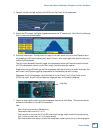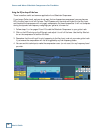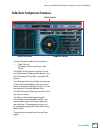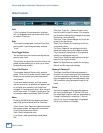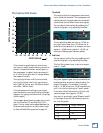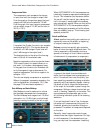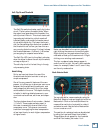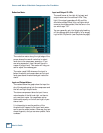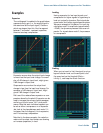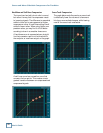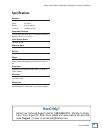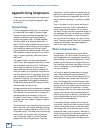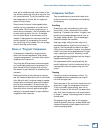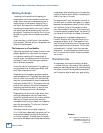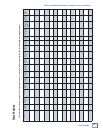
User’s Guide
25
Stereo and Mono Sidechain Compressors for Tracktion
level, we’ve made the vocal track louder in the
mix without reaching a volume at any point that
will cause distortion. To do this requires a very
fast compressor or limiter, but it’s a good ex-
ample of the principle.
Since to most listeners, louder equals better,
another use for compression is to make a mix
sound louder. Often there’s a single sound - a
snare drum for example – that’s noticeably loud-
er than anything else in the mix. A drummer
hits the snare louder on some beats, and the
loudest hit determines the maximum level that
can be recorded. By compressing the overall
mix and sitting on the loudest hits, the average
level of the song can be raised.
Stereo or “Program” Compressors
A compressor is basically a single channel
device, but stereo compressors, often called
“program compressors,” are most often used to
compress a full stereo mix.
The thing that differentiates a stereo compres-
sor from simply patching one compressor into
each channel is that the signal that controls
the amount of gain reduction is shared by both
channels.
Reducing the level of one channel of a stereo
pair will cause the balance to shift to the louder
side. We don’t want the stereo image to wander
around when one channel goes over threshold
and the other one doesn’t, so we connect the
level detectors of the two compressors together.
Now when either channel requires some gain
reduction, that same amount of gain reduction
is applied to both channels.
Compressor Artifacts
Two uncomplimentary terms often used to de-
scribe the sound of a compressor are breathing
and pumping.
Breathing
Breathing is most noticeable on a solo voice
and is often, in fact, the sound of the vocalist
breathing. If release time is short, the gain rises
quickly during pauses between words, just as
the singer takes a breath. The increased gain
makes the breath more audible.
Hearing a singer taking a breath may not al-
ways be desirable or dignifi ed, but at least it’s
organic. Few recordings are made in an abso-
lutely silent environment, however. Any ambient
noise in the room will be boosted when the gain
rises, creating an artifi cial “breathing” sound,
perhaps even bringing leakage from the singer’s
headphones along with it.
All compressors exhibit some breathing, but
careful adjustment (which includes controlling
room acoustics and mic positioning) can mini-
mize it.
Pumping
Pumping is another compressor artifact. It’s
more apparent when compressing an overall
mix than a single track.
One instrument in the mix that’s louder than the
others will trigger the compressor into action.
If that instrument stops playing, even for an
instant, the level of the mix will increase notice-
ably. Each time the dominant instrument starts
or stops, it “pumps” the average level of the mix
up and down.
Compressors that work best on full program
material generally have very smooth attack and
release curves and a slow release time to mini-
mize the pumping effect.



